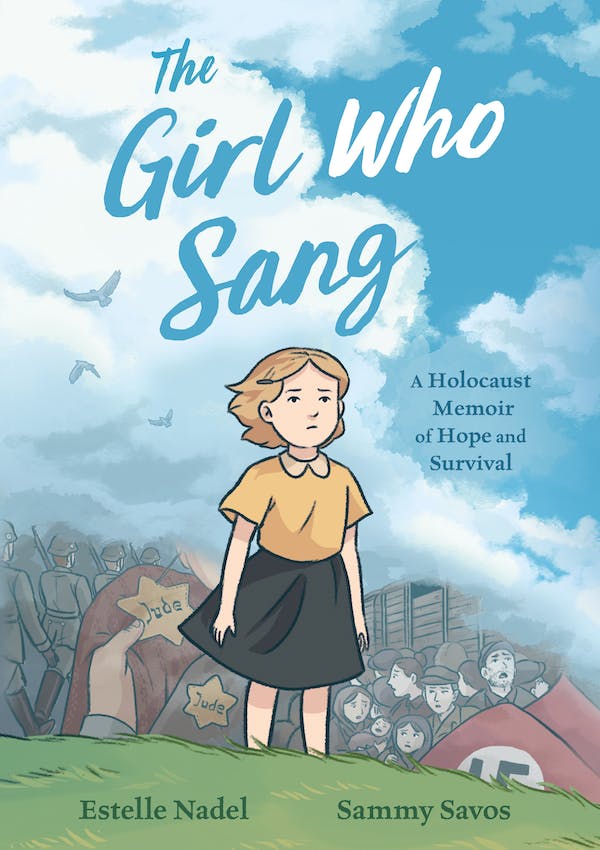
The Girl Who Sang
By Estelle Nadel with Bethany Strout; illustrated by Sammy Savos
Ages 10-14
On Sale Now!
A heartrending graphic memoir about a young Jewish girl’s fight for survival in Nazi occupied Poland, The Girl Who Sang illustrates the power of a brother’s love, the kindness of strangers, and finding hope when facing the unimaginable.
Born to a Jewish family in a small Polish village, Estelle Nadel—then known as Enia Feld—was just seven years old when the Nazis invaded Poland in 1939. Once a vibrant child with a song for every occasion, Estelle would eventually lose her voice as, over the next five years, she would survive the deaths of their mother, father, their eldest brother and sister, and countless others.
A child at the mercy of her neighbors during a terrifying time in history, The Girl Who Sang is an enthralling first-hand account of Estelle’s fight for survival during World War II. She would weather loss, betrayal, near-execution, and spend two years away from the warmth of the sun—all before the age of eleven. And once the war was over, Estelle would walk barefoot across European borders and find remnants of home in an Austrian displaced persons camp before finally crossing the Atlantic to arrive in New York City—a young woman carrying the unseen scars of war.
Beautifully rendered in bright hues with expressive, emotional characters, debut illustrator Sammy Savos masterfully brings Estelle story of survival during the Holocaust to a whole new generation of readers. The Girl Who Sang is perfect for fans of March, Maus, and Anne Frank’s Diary.
Praise for The Girl Who Sang
★ “An excellent accompaniment to lessons on World War II, this book will help countless students examine the Holocaust on a personal level. A must-have. The graphic novel format will appeal to those whose first choice might not be history or biography, and all others will be invited to consider the full-life experiences of Holocaust survivors.”—School Library Journal, starred review
★ “Told in five parts, Nadel’s story presents readers with a picture of her life before (“I thought we would be this happy forever”), during, and—crucially—after the war. Savos’ exceptionally powerful illustrations convey the extremes of human emotion, make original use of different perspectives, and are both cinematic and intimate; they also do not shy away from accurately portraying the hardships and violence. Sweeping, stark, tragic, and triumphant.”—Kirkus Reviews, starred review
“At the start of this compelling graphic memoir, four-year-old Enia Feld lives a seemingly carefree life with her loving extended family in 1939 Borek, Poland. Though they are “very, very poor”—and there are hints of antisemitism and violence to come—Enia feels safe, secure, and well cared for, her voice constantly lifted in song . . . On September 1, though, Germany invades. The family’s rights are continually eroded (“things changed over the next two years. Slowly”) until, inevitably, they are forced to flee for their lives. In five dramatic parts—Innocence, Hidden, Liberation, A New Beginning, The Girl Who Sang—this harrowing story is told and shown in clear sequential art that reflects the terror and grief of Enia’s experiences in contrast with her early, pastoral-set days. When liberation finally occurs, after years of whispers in hiding, the once-vivacious girl has gone nearly silent, but it’s in finding her voice that she is able to begin a new life in America. The history is deeply personal, as related by Nadel (who passed away in November 2023), and her intent is made clear in her concluding note: “I’m not going to be here forever. Someday there will no longer be Holocaust survivors still living . . . I want you, the young people, the next generation, to carry our stories on.” An afterword, family photos, additional resources, an illustrator’s note, and details about comics are appended.”—The Horn Book Magazine


